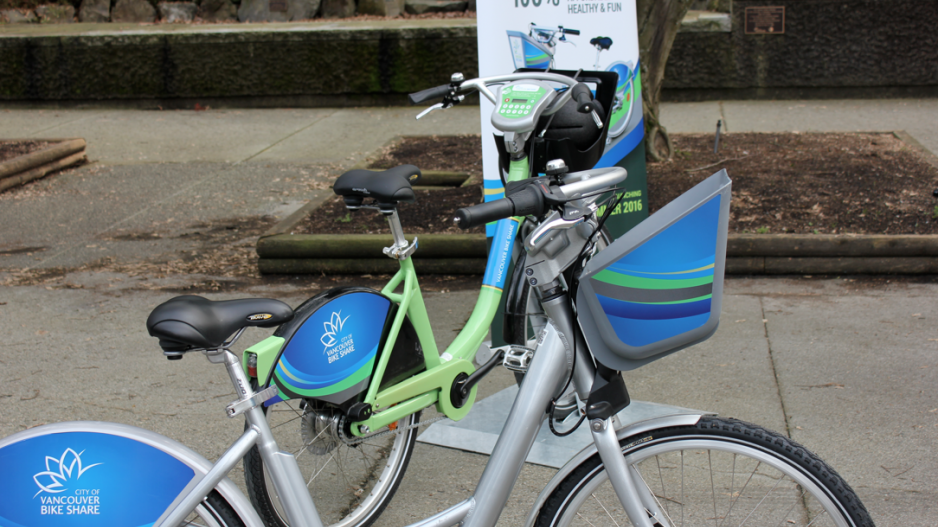The City of Vancouver hopes the five years it’s spent starting and restarting its bike share will pay off in a robust system that will be successful like Boston — not a bust like Seattle.
After just 17 months in operation, Seattle’s bike share, Pronto, is in deep trouble. Seattle city council is now considering buying the insolvent operation after ridership lagged.
Seattle is similar to Vancouver in having a robust cycling culture and a mild climate that allows for year-round biking. Like B.C., Seattle has a mandatory helmet law, which many observers have said will be a hurdle for Vancouver’s bike share.
Read: Vancouver's bike share to be in place by June
But Seattle’s bike share made several missteps that Vancouver seems to have avoided, said Tom Fucoloro, a freelance journalist who blogs about cycling in Seattle. Pronto launched in October 2014 — just in time for the winter rainy season, Fucoloro noted. It also provided just 500 bikes and 50 stations, compared to Vancouver’s 150 stations and 1,500 bikes.
“That’s a much healthier size,” he said. “We’re just too big of a city to have such a small system.”
It’s important that bike share systems be designed with enough bikes so that bikes are there when users want to use them, said Scott Edwards, manager of street activities for the City of Vancouver. Vancouver plans to tie bike share stations to complement transit, so a user who gets off SkyTrain can easily get on a bike to complete the last portion of their trip.
The helmet requirement has been cumbersome, Fucoloro said.
“It’s added costs to the system, they’re bulky, they’re not necessarily cheap, you store them, you have to have a system to claim them,” he said. “It adds a lot of costs to every trip.”
In Seattle, riders can get a helmet from a bin, with regular members being emailed a new access code every month.
“You have to look up the latest code and put it in,” said Fucoloro, who is a Pronto member. “Or if you’re a day-use person and paying with a credit card on the spot they give you a little number on the screen and you have to pay $2 to use it.”
Vancouver’s chosen operator, Cyclehop, has worked with helmet-maker Bell to create a low-cost helmet for Vancouver’s system. The helmets will be stored in a basket on each bike and cleaned once a day, with regular users encouraged to use their own helmet.
Pricing hasn’t yet been determined for Vancouver’s system, but in Seattle, users can pay $8 a day, $16 for three days, or an $85 a year for a membership.
Vancouver also has a better-developed network of bike routes through the downtown core and city neighbourhoods, meaning that urban cycling isn’t limited to those Lycra-clad enthusiasts who are comfortable weaving in and out of traffic.
Seattle still needs to catch up to Vancouver in that regard, Fucoloro said.
“Downtown’s kind of off-limits to you in Seattle, whereas in Vancouver you can stick to the nice bike lanes and get most places,” he said.
@jenstden




